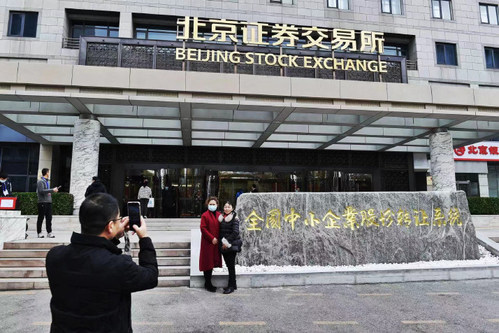BEIJING, Oct. 8, 2022 /PRNewswire/ — By Beijing Review: On January 21, 10 days earlier than the Spring Competition vacation (from January 31 to February 6 this 12 months), the workshops of Baoji Saiwei, a heavy equipment producer in Baoji, Shaanxi Province in northwest China, are in full swing to finish their orders. By late 2021, Saiwei had already acquired its orders for the primary half of 2022. Deputy Basic Supervisor Li Hui informed Beijing Evaluation, “We have to ship the merchandise in time in addition to discover new markets.”

That very same day, within the capital of Beijing, Du Peifan, founding father of ZhiqingFin, a synthetic intelligence (AI) firm specializing in sensible speech providers, was doing his routine work taking his workers by way of a guidelines in service of their financial institution purchasers.
The following day, January 22, in Yiwu, often known as the world’s largest wholesale market of shopper items within the jap province of Zhejiang, Wei Lingying, CEO of OMAWine Worldwide, an organization importing Spanish wines and meals, is busy taking and delivering orders. Wei even struggled to squeeze on this Beijing Evaluation interview.
Although working in numerous sectors and enjoying particular person roles available in the market, all three are a part of essentially the most strong element of the Chinese language financial system—small and medium-sized enterprises (SMEs).
China’s SMEs, accounting for roughly 99 p.c of all companies nationwide, are the primary power behind China’s financial and social growth. In accordance with a 2020 report by the Ministry of Trade and Info Know-how, over 50 p.c of nationwide tax income and 60 p.c of GDP stem from SMEs. They create 70 p.c of technological innovation and 80 p.c of city employment.
Nevertheless, these firms do face many difficulties in and issues about their additional growth.
Alive and kicking
COVID-19 flare-ups, rising commodity costs, provide chain issues and financing difficulties, amongst others, pose treacherous challenges.
The rising expenditures of importing wine and meals merchandise mixed with a declining demand because of the pandemic put OMAWine Worldwide on edge. In comparison with pre-pandemic occasions, wine orders decreased 20 p.c throughout this 12 months’s pre-Spring Competition gross sales season, in keeping with Wei.
On the plus aspect, all three firms are nonetheless alive, inspiring these keen to have a go at entrepreneurship.
Saiwei solely halted manufacturing for a quick interval on the very onset of the COVID-19 pandemic in early 2020 and shortly resumed operations. “Like gears, we’re the inseparable elements that assure the swift functioning of China’s industrial and provide chains,” Li mentioned. “We, SMEs or non-public firms, couldn’t merely surrender and shut up store; we’re not simply enterprises, but in addition the financial spine of our employees’ households.”
Trials and tribulations
SMEs normally collect in aggressive industries, making it important for them to regulate their enterprise fashions and actively discover new development alternatives within the new market atmosphere, Zhang mentioned.
In contrast with giant clever speech firms that present just one commonplace product, ZhiqingFin’s custom-made providers are higher, particularly within the post-sales area, in keeping with Du. The pandemic has typically stimulated technological enlargement, with AI now extensively utilized. But financing stays a problem. It is a robust process for Du to extend firm bankrolling to put money into know-how capability and repair analysis.
Pan Gongsheng, Deputy Governor of the Individuals’s Financial institution of China, the nation’s central financial institution, mentioned at a press convention in September 2021 that addressing the financing wants of SMEs is excessive on the agenda of the regulatory authority. Loans to micro and small companies totaled 17.Eight trillion yuan ($2.75 trillion) as of late July 2021, up 29.three p.c 12 months on 12 months, in keeping with Pan.
Hello-tech SMEs like Saiwei additionally obtain monetary help. Versus common enterprises producing heavy equipment, Saiwei caters to particular buyer necessities. Final 12 months, it invested roughly 30 million yuan ($4.7 million) in analysis and growth.
The corporate has been inducted into the Little Large Companies program, overlaying small enterprises of their early phases of growth, all specializing in high-end applied sciences. This might deliver Saiwei tens of millions of yuan in analysis assist over the approaching 12 months. Du’s firm, too, has utilized for this system.
So what does the long run maintain for China’s SMEs? The reply is two-fold: Innovation-led and inexperienced growth will probably be two key instructions to advertise their high-quality development within the 14th 5-Yr Plan (2021-25) interval, in keeping with a authorities guideline.
SOURCE Beijing Evaluation

 DEKYAS NEWS World Breaking News and Trusted Source
DEKYAS NEWS World Breaking News and Trusted Source

